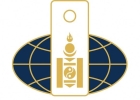Mongolian GER
2023-04-22
The Ger is a round shaped, portable dwelling that has been used, ever since ancestors of the Mongols learned how to make felt during the Bronze Age more than three thousand years ago. It is written in a Chinese chronicle dated in 629 BC that the Mongol tribes before the period of Huns had been lived in such round dwellings.
In Central Asian steppes, with a harsh continental climate where the heat reaches more than +30 degrees Celsius in summer, and it drops down to more than -30 degrees in freezing winter, the ger was ideally suited to nomadic lifestyle of cattle breeders who used to move to different campsites every season of a year, in order to find better pasture.
Ger is portable, assembled or disassembled easily, and it keeps cool in summer and warm in winter.
It should be noted that the Mongolian ger is registered as one of the UNESCO world cultural heritages.
Due to its unique characteristics, ger is still useful today not only for traditional nomads in the vast countryside of Mongolia, but also for people living in cities.
Simplicity of Design and Mobility
Design and structure of the ger is very simple that consists of few parts such as wooden thin poles, walls (lattices attached together), two columns, a floor, a door and a round crown at the top, felt covers and long ropes made of wool.
The lattice walls can be folded up to small sizes that it can easily be carried by arms. The same can be said about connecting parts of the floor.
Although, it looks a little bit small with only one chamber, the most common and modern ger with five folding walls is spacious with an area of almost 32 square meters with 6.2 meters in diameter.
Two person can assemble or disassemble a ger within an hour. A whole ger weighs approximately 300 kilograms and is carried on two camels or on one cart.
A Russian ethnographer and geographer, the director of the Museum of nomadic cultures in Moscow, Konstantin Kuksin believes that compared to the yurts (gers) of the Turkic nations in Central Asia, Mongolian gers are simpler and suited much more to the harsh weather.
In Mongolian ger, there is no windows and the light passes only through the crown in the center of the ceiling. Because the crown and all 88 poles of the ceiling are painted in red, the yurt is light inside.
Stability and Safety
In Central Asia, wind blows predominantly North and North-West. Therefore, the door of Mongolian ger always looks to the south, that is, to the leeward side.
Thanks to short walls and streamlined, round and aerodynamic shape, the ger can withstand ferocious stormy winds, which are common in the steppes of Mongolia.
And since the felt is a material that dries fast, inside the ger is dry and comfortable, even in rainy and snowy weather.
Also, it can withstand a strong earthquake because of its non-solid structure. Even if it collapses, there will not be much damage due to its light roof and the ger can be quickly assembled again.
Air Circulation, Heat and Coolness
Another unique characteristics of the Mongolian ger is the air circulation that allows to keep fresh air constantly.

Heat loss is less in round gers than in rectangular houses. In addition, the heat is located in the very center that allows it to spread evenly. A special role of keeping cool during summers and warm in winters is played by the felt cover of a ger.
Felt made of sheep wool is a “smart” material that can adjust itself to any changes in weather. In hot weather, felt micron expand and allow more air to enter the ger, thereby it cools down. On the contrary, when it gets cold, the felt microns shrink and retain more heat in the ger.
Environmental Friendliness and Health Care
The Mongols, who respect the mother earth, always live in harmony with nature and do not harm the environment.
Even their dwelling – the ger does not violate the ecological balance. As the Mongols move several times a year from one place to another, the land where they build the ger, restores quickly. Before relocating, the nomads necessarily clean the place, where they have stayed and do not leave any garbage after themselves.
It is said that Mongols are energetic people. One of the reasons is possibly that they take energy directly from heaven and land, even in their gers. There was no floor in ger before.

Ger as a Unique Sundial
The ancestors of the Mongols had their own calendar and hours of the day, which was based on their deep knowledge of astronomy and experience, accumulated on the basis of observations of movements of the Sun and other celestial bodies. The Mongols used the lunar calendar with a 12-year cycle and the time of day divided by 12 hours.
The proportion of the ger recreates the model of sundial. The exact daytime was determined at the place where the sunlight fell into the ger. The internal planning of the ger is conditionally divided into 12 parts, according to the cycle of 12-year calendar.
The first sunlight falls through the crown on western (right) side of the door at hours of the hare (05.40 – 07.40), and the last – on eastern (left) side of the door at hours of the hen (17.40 – 19.40).

